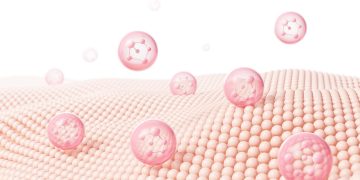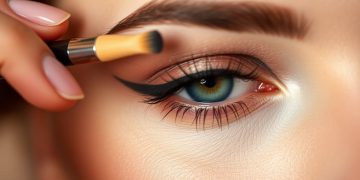Laser skin resurfacing has become one of the most popular treatments for rejuvenating aging skin. As we age, the skin naturally loses its elasticity, moisture, and vibrance, resulting in wrinkles, fine lines, pigmentation issues, and uneven skin texture. While many anti-aging treatments exist, laser skin resurfacing stands out as one of the most effective and versatile procedures to target these concerns. In this article, we will explore the real benefits of laser skin resurfacing, how it works, the targeted issues it addresses, its immediate and long-term results, and its associated risks. Ultimately, we will help you determine if this treatment is the right choice for your skin.
Introduction: Explanation of Laser Skin Resurfacing
Laser skin resurfacing is a cosmetic procedure designed to improve the appearance of the skin by using focused light to remove layers of damaged skin. It is primarily used to treat visible signs of aging, such as fine lines, wrinkles, uneven skin tone, and pigmentation issues. The laser stimulates the production of collagen, a protein responsible for the skin’s structure and elasticity, leading to smoother, firmer, and more youthful-looking skin.
The procedure can be performed using two main types of lasers: ablative and non-ablative. Each type of laser works differently to address various skin concerns, and understanding the distinctions between the two is crucial when choosing the right treatment for your skin.
How It Works: Ablative vs. Non-Ablative Lasers
- Ablative Lasers
Ablative lasers work by removing the outer layers of damaged skin, exposing the fresher, healthier skin beneath. These lasers are more aggressive and are typically used to treat more severe skin issues, such as deep wrinkles, extensive sun damage, and scarring. The most commonly used ablative lasers are carbon dioxide (CO2) and erbium lasers.
CO2 lasers use a high-energy beam to vaporize damaged skin cells, while erbium lasers remove the top layer of skin while minimizing thermal damage to surrounding tissues. Ablative lasers offer dramatic results and are often used for patients who require significant skin rejuvenation. However, they come with longer recovery times and a greater risk of side effects such as redness, swelling, and scarring.
- Non-Ablative Lasers
Non-ablative lasers, on the other hand, are less invasive and work by penetrating the skin without removing any layers. These lasers target deeper layers of the skin to stimulate collagen production and improve the overall texture of the skin. Non-ablative lasers are ideal for individuals who want to address mild to moderate skin concerns such as fine lines, sunspots, and uneven skin tone without the downtime associated with more invasive treatments.
Popular non-ablative lasers include fractional lasers, such as Fraxel, and intense pulsed light (IPL) devices. These lasers work by delivering light energy to the skin, which is absorbed by the underlying tissue to encourage collagen production and promote skin healing. Non-ablative lasers generally require multiple sessions to achieve noticeable results, but the recovery time is minimal, and side effects are usually less severe.
Targeted Issues: Wrinkles, Pigmentation, Texture
Laser skin resurfacing is effective at targeting several common signs of aging, each of which can significantly impact the skin’s appearance. Let’s break down the primary skin issues laser resurfacing can address:
- Wrinkles and Fine Lines
One of the most significant benefits of laser skin resurfacing is its ability to reduce the appearance of wrinkles and fine lines. As we age, the skin loses collagen and elastin, leading to the formation of these age-related concerns. Laser treatment helps stimulate collagen production, which tightens the skin and smooths out fine lines and wrinkles. This is particularly effective for areas like the forehead, around the eyes, and the mouth.
- Pigmentation Issues
Laser resurfacing can also address pigmentation problems caused by aging, sun exposure, or hormonal changes. These include age spots, freckles, melasma, and other forms of hyperpigmentation. Both ablative and non-ablative lasers target the melanin in the skin, breaking it down and promoting an even skin tone. Non-ablative lasers, such as IPL, are particularly effective at treating pigmentation issues without the need for extensive downtime.
- Skin Texture and Tone
Laser resurfacing is excellent for improving the overall texture and tone of the skin. Over time, the skin can become uneven in texture due to sun damage, acne scars, or simply the aging process. Laser treatments help smooth out rough skin and reduce the appearance of scars and other imperfections. For patients with textured skin, lasers can create a more youthful, even surface that enhances the overall appearance of the skin.

Results: Immediate vs. Long-Term Benefits
Laser skin resurfacing delivers both immediate and long-term benefits. While the immediate results may vary depending on the type of laser used, patients typically notice an improvement in skin tone and texture within the first few days to weeks following treatment.
- Immediate Results
In the first few days after the procedure, the skin may appear red, swollen, and slightly irritated. This is particularly true for ablative laser treatments, where the skin’s outer layers are removed. However, after the initial healing phase, patients often see an immediate improvement in the skin’s overall appearance, with smoother, more radiant skin. Pigmentation issues may begin to lighten, and fine lines and wrinkles may appear less prominent.
- Long-Term Results
The long-term benefits of laser skin resurfacing become more noticeable as the skin continues to heal and regenerate over time. As collagen production increases, the skin becomes firmer, and the overall appearance improves. For most patients, the full benefits of laser resurfacing are visible within 3 to 6 months after treatment. Depending on the laser type and the individual’s skin condition, the results can last for several years.
Patients who undergo non-ablative laser treatments may require multiple sessions to achieve the desired results. However, once the skin is fully healed and collagen production is stimulated, the effects can be long-lasting. For those with more advanced aging concerns, ablative lasers offer more dramatic results, but the recovery period may be longer.
Risks and Side Effects: Redness, Swelling, Scarring
While laser skin resurfacing is generally safe, there are risks and potential side effects associated with the procedure. These can vary depending on the type of laser used, the individual’s skin type, and how well they follow aftercare instructions. Some of the most common side effects include:
- Redness and Swelling
After the procedure, patients can expect some degree of redness and swelling, particularly with ablative lasers. This is a natural part of the healing process and typically subsides within a few days to a week. However, in more severe cases, swelling and redness may persist longer, especially if the skin was aggressively treated.
- Scarring
Although scarring is rare, it can occur, particularly with ablative lasers. Inadequate aftercare, such as picking at scabs or exposure to the sun, can increase the risk of scarring. Scarring is more common in individuals with darker skin tones or those who do not follow proper aftercare instructions.
- Hyperpigmentation or Hypopigmentation
In rare cases, laser resurfacing can cause changes in skin pigmentation. Hyperpigmentation refers to areas of darker skin, while hypopigmentation involves lighter skin patches. These side effects are more common in individuals with darker skin and can sometimes be permanent if not properly managed.
- Infection
Infections are also a possibility if the skin is not properly cared for following treatment. It is crucial to keep the treated area clean and follow all aftercare guidelines provided by the medical professional to reduce the risk of infection.
Conclusion: Is It the Right Treatment for Your Skin?
Laser skin resurfacing offers significant benefits for individuals looking to address the visible signs of aging, including wrinkles, pigmentation issues, and skin texture. Both ablative and non-ablative lasers are effective treatments, with each offering distinct advantages based on the severity of the skin concerns being addressed. Ablative lasers are more aggressive and suitable for patients with more advanced skin issues, while non-ablative lasers provide a less invasive option with minimal downtime.
While the immediate results of laser resurfacing are promising, the full benefits become more noticeable over time as collagen production is stimulated and the skin continues to heal. Long-term results can be highly effective, with smoother, firmer skin that looks significantly more youthful.
However, laser skin resurfacing is not without risks. Patients should be aware of the potential side effects, including redness, swelling, scarring, and pigmentation changes. Choosing the right type of laser and following proper aftercare guidelines can help minimize these risks and ensure the best possible outcome.
Before deciding whether laser skin resurfacing is the right treatment for you, it is essential to consult with a qualified dermatologist or cosmetic surgeon. They will assess your skin type, aging concerns, and overall goals to determine the best approach for achieving your desired results.












































